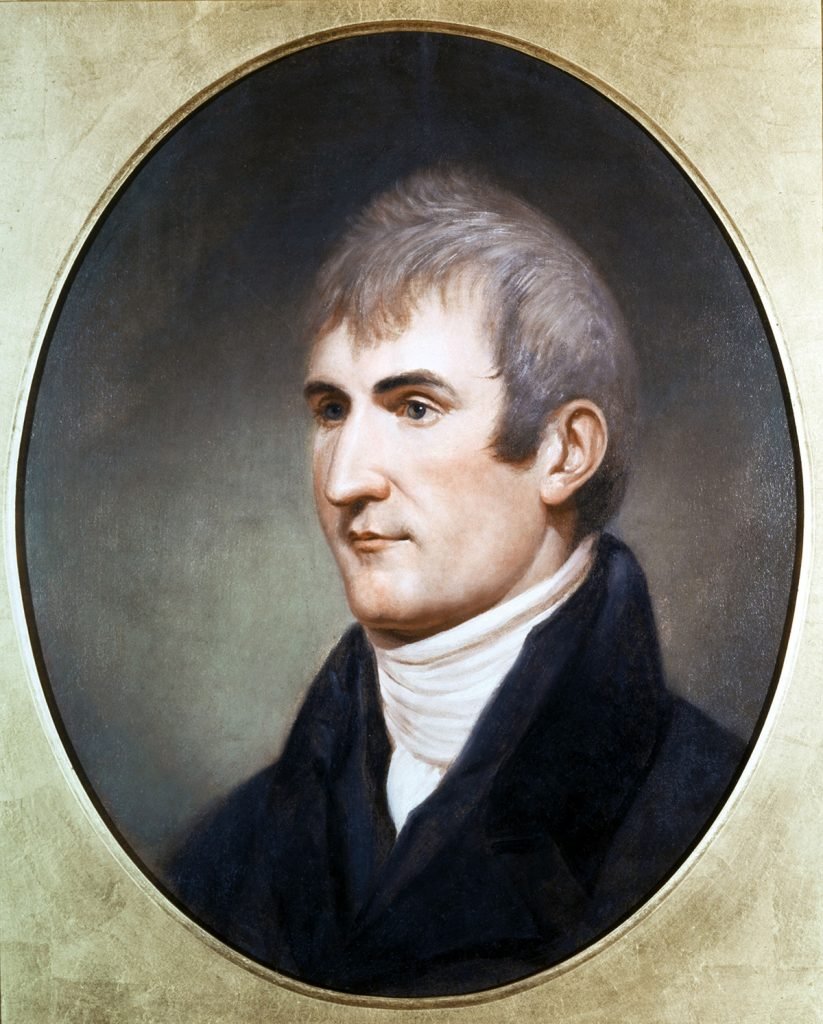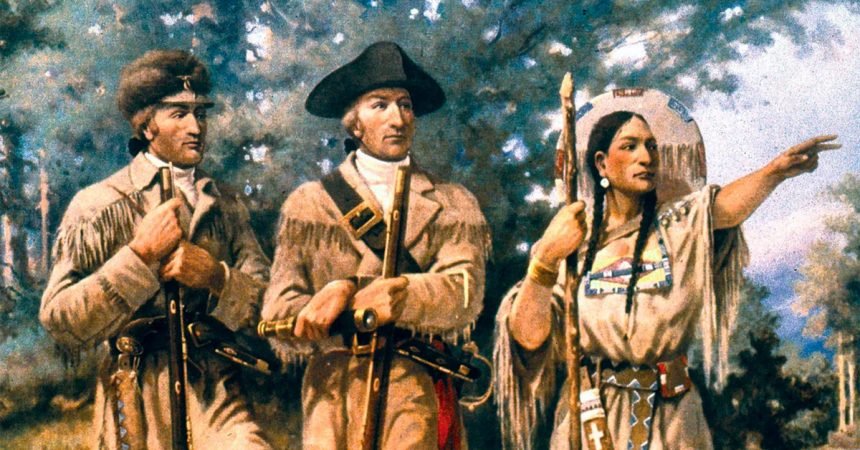The following article is a guest contribution by Philippa Newfield and Jay H. Buckley:
Meriwether Lewis, co-captain of the Lewis and Clark Expedition, turns 250 on August 18! Born in 1774 to William Lewis and Lucy Meriwether, Meriwether Lewis grew up on the family’s Ivy Creek plantation “Locust Hill” near Charlottesville, Virginia, and Thomas Jefferson’s Monticello. Lewis’s father died while serving in the Continental Army in 1779. Lewis began managing Locust Hill under his uncle’s supervision. He joined the Virginia militia in 1794 to suppress the Whiskey Rebellion in Pennsylvania and enlisted in the army during the Northwest Indian War (Little Turtle’s War), serving for a brief time in William Clark’s Chosen Rifle Company. Lewis’s military career advanced rapidly from ensign (1795), to lieutenant (1799), to captain (1800), and he served as an army recruiter and paymaster. In 1801 President Jefferson asked Lewis to be his personal secretary and live with him in the White House.

In 1803 Jefferson appointed Lewis to command an expedition to explore the Louisiana Purchase. His considerable capacities, combined with his frontier skills, military service, physical endurance, mental capabilities, and literary skills made him an excellent choice. Lewis traveled to Philadelphia to study astronomy, botany, zoology, and medicine with some of the leading scientists and doctors. He began recruiting men and purchasing equipment, boats, and supplies. When Jefferson’s instructions informed Lewis of the commercial, scientific, and diplomatic purposes of the venture, Captain Lewis invited his good friend Clark to join him as co-commander of the expedition.
The 8,000-mile expedition spanned three years from 1803 to 1806 and took the Corps of Discovery down the Ohio, up the Missouri, across the Continental Divide, and down the Columbia to the Pacific. Lewis served as a field scientist, chronicling botanical, zoological, meteorological, geographic, and ethnographic information. The expeditions’ journals kept by Lewis, Clark, the sergeants, and an enlisted man are a national treasure. The co-commanders advanced the fur trade by documenting the river systems and fur resources in the West. They met Indian leaders, distributed trade goods, invited Indian delegations to travel to Washington, and conducted negotiations for peace, friendship, and trade.
Now, 218 years after the return of the Lewis and Clark Expedition, the Lewis and Clark National Historic Trail (created by an act of Congress in 1978; expanded in 2019) stretches 4900 miles from Pittsburgh, Pennsylvania, to the Pacific. Despite the passage of time one can still stand in Lewis’ footsteps and see what he saw. “High potential historic sites” have been designated by the National Park Service to indicate those places along the Lewis and Clark National Historic Trail that provide opportunity to interpret the historic importance of the Corps of Discovery’s route. Criteria for consideration as high potential sites include historic significance, presence of visible historic remnants, scenic quality, and relative freedom from intrusion. Designated sites remain relatively unchanged from Lewis and Clark’s passage – despite subsequent development, dams, changing river courses, roads, and all the other natural and man-made phenomena that affect the landscape.
Notable among these timeless landscapes are the “White Cliffs” of the Missouri River Breaks National Monument in Montana. Magnificent, massive Virgelle sandstone rock structures rise impressively above the water, ever changing with the light of sun and moon. Lewis wrote in 1805 the cliffs provided “s[c]enes of visionary enchantment.” A day trip will bring the modern explorer within sight of them along the banks of the Missouri. For those desiring a longer sojourn, canoe trips with camping and even glamping options (meals and tent/cot set up provided) are available.
Even more accessible but equally off the beaten path is the confluence of the Yellowstone and Missouri rivers near the Montana/North Dakota border – the parking for the Missouri-Yellowstone Confluence Interpretive Center is in Montana and the center is in North Dakota. The site is of historic significance to the Lewis and Clark Expedition and as a strategic fur-trading location with Fort Union, Fort William, Fort Buford, and other fur-trade posts nearby. Artists George Catlin and John James Audubon visited and sketched Fort Union in 1832 and 1843 respectively.
The Lolo Trail National Historic Landmark followed by the Corps of Discovery across the mountains from Montana into Idaho is the ultimate in high potential historic sites as access requires a high-carriage vehicle, camping equipment, and backwoods know-how. Paralleling the rough road of the Lolo Trail, however, is Highway 12 that also runs between Montana and Idaho. Among the number of high potential historic sites along this stretch of highway is Packer Meadow within the Clearwater National Forest where members of the Corps of Discovery camped on both their westward and return routes.
These are but three of the 14 high potential historic sites from Pittsburgh to St. Louis and 77 sites from St. Louis to the Pacific. Others exist in urban areas, among them the Forks of the Ohio River in Pittsburgh; Historic Locust Grove in Louisville, Kentucky; George Rogers Clark Homesite at the Falls of the Ohio in Clarksville, Indiana; Gateway Arch National Park in St. Louis, Missouri; Sergeant Floyd Monument in Sioux City, Iowa; On-a-Slant Village and Fort Mandan near Bismarck, North Dakota; Great Falls Portage in Great Falls, Montana; Travelers’ Rest near Missoula, Montana; and Fort Clatsop in Astoria, Oregon. Whatever your interest and preferred mode of travel, there is a high potential historic site along the Lewis and Clark National Historic Trail for you. Visit lewisandclark.travel to plan your own Lewis and Clark Trail Experience. Then go out and embrace the thrill of discovery for yourself as we our nation commemorates Meriwether Lewis’s 250th birthday.
Philippa Newfield is past president of the Lewis and Clark Trail Alliance, co-editor of the LCTHF’s e-newsletter The Orderly Report, and assistant to the editor of the LCTHF’s journal We Proceeded On.
Jay H. Buckley, PhD, past president of the Lewis and Clark Trail Alliance and historian at Brigham Young University, is the author of By His Own Hand? The Mysterious Death of Meriwether Lewis; William Clark: Indian Diplomat; Zebulon Pike, Thomas Jefferson and the Opening of the American West; and Great Plains Forts. This was excerpted in part from his “Meriwether Lewis” entry in the Encyclopaedia Britannica.
